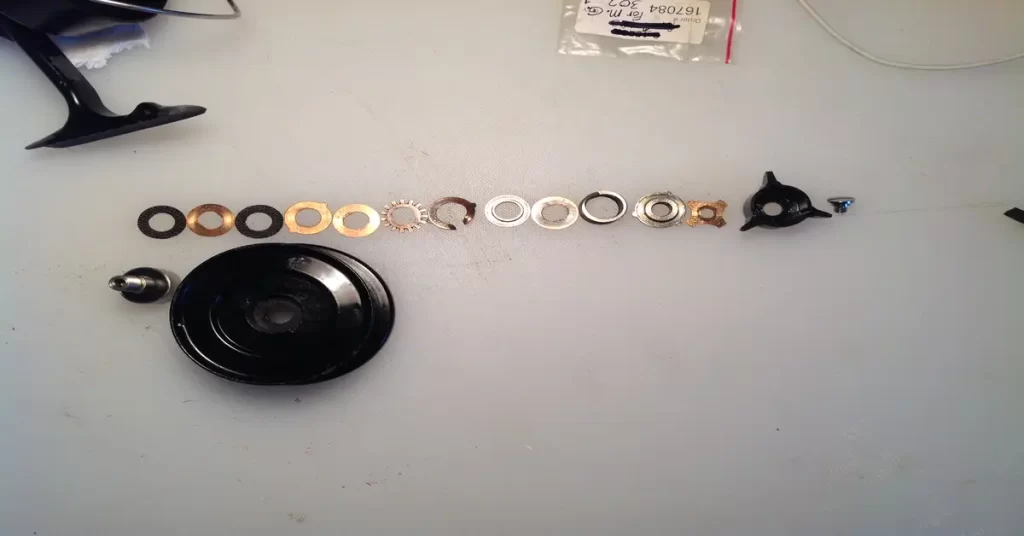
Introduction to: How to Clean Fishing Reel Bearings
Fishing reel bearings are crucial components that ensure the smooth operation of your reel. Over time, these bearings can accumulate dirt, debris, and corrosion, leading to decreased performance and potential damage to your equipment. Regular maintenance, including cleaning and lubrication, is essential to keep your fishing reel bearings in top condition. This comprehensive guide will walk you through the step-by-step process of cleaning fishing reel bearings to maintain their efficiency and prolong the life of your gear.
Importance of Cleaning Fishing Reel Bearings
1. Enhanced Performance
Clean bearings ensure smoother rotation, allowing the reel to operate at peak performance. This reduces friction and enhances casting distance and retrieval speed.
2. Increased Longevity
Regular cleaning prevents corrosion and wear, prolonging the life of your bearings and the overall reel.
3. Prevention of Malfunctions
Dirty bearings can cause malfunctions, such as jamming or inconsistent drag, leading to missed catches or damage to the reel.
Tools and Materials Required
Before starting the cleaning process, gather the necessary tools and materials:
- Screwdriver set: To disassemble the reel.
- Clean cloth: To wipe off excess grease and dirt.
- Rubbing alcohol or reel cleaning solvent: For cleaning the bearings.
- Toothbrush or Q-tips: To reach intricate parts of the bearings.
- Light lubricating oil or grease: To re-lubricate the bearings.
- Small containers: To soak and clean the bearings individually.
- Latex gloves: For hand protection.
- Workbench or clean, well-lit workspace: To prevent loss of small parts.
- Patience and precision: Essential for meticulous work.
Step-by-Step Guide to Cleaning Fishing Reel Bearings

1. Prepare Your Workspace
Choose a clean, well-lit workspace to prevent loss of small parts. Lay down a clean cloth or mat to organize your tools and prevent any dropped components from rolling away.
2. Disassemble the Reel
Use a suitable screwdriver to carefully disassemble the reel, keeping track of the sequence of parts and the location from which they were removed. Organize the parts systematically to aid in reassembly later.
3. Remove Bearings
Identify the bearings in the reel. Usually, they are small, circular components located within the reel’s housing. Gently remove the bearings using a pair of tweezers or a small pick tool.
4. Clean the Bearings
Place the removed bearings in small containers filled with rubbing alcohol or a specific reel cleaning solvent. Let them soak for 15-20 minutes to loosen the dirt and old lubricants. Use a toothbrush or Q-tips to carefully clean each bearing, ensuring all surfaces are free from debris.
5. Inspect for Damage
While cleaning, inspect the bearings for signs of wear, corrosion, or damage. If any bearing shows significant wear or damage, it might need replacement. It’s crucial to maintain the integrity of the bearings for optimal reel performance.
6. Dry and Lubricate
After cleaning, remove the bearings from the solvent and allow them to dry completely. Once dry, apply a small amount of light lubricating oil or grease to each bearing. Be careful not to over-lubricate as excess grease can attract dirt and hinder performance.
7. Reassemble the Reel
Carefully reassemble the reel, referring to any reference material or diagrams if needed. Ensure that all components are in the correct order and properly tightened.
8. Test the Reel
Before using the reel in actual fishing conditions, test it by manually rotating the spool and checking for smoothness and proper functionality.
Maintenance Tips for Prolonging Bearing Life

- Regular Cleaning: Schedule regular cleaning sessions to prevent dirt accumulation.
- Avoid Contaminants: Keep your reel away from sand, salt, and other contaminants that can damage the bearings.
- Proper Storage: Store the reel in a dry, clean place and use reel covers to protect it from dust and moisture.
- Periodic Lubrication: Apply a light coat of lubricant to the bearings after cleaning and occasionally during use to maintain smooth operation.
Conclusion to: How to Clean Fishing Reel Bearings
Regular maintenance and cleaning of fishing reel bearings are essential for preserving the longevity and performance of your equipment. By following the step-by-step guide and implementing the provided tips, you can ensure that your reel operates smoothly and efficiently, maximizing your fishing experience.
Remember, patience and precision are key when handling small, intricate parts like bearings. With proper care and maintenance, your fishing reel bearings will continue to perform at their best, enhancing your fishing adventures for years to come. Also check out: Why are fishing rods so expensive? Catfishingusa.com Blog

